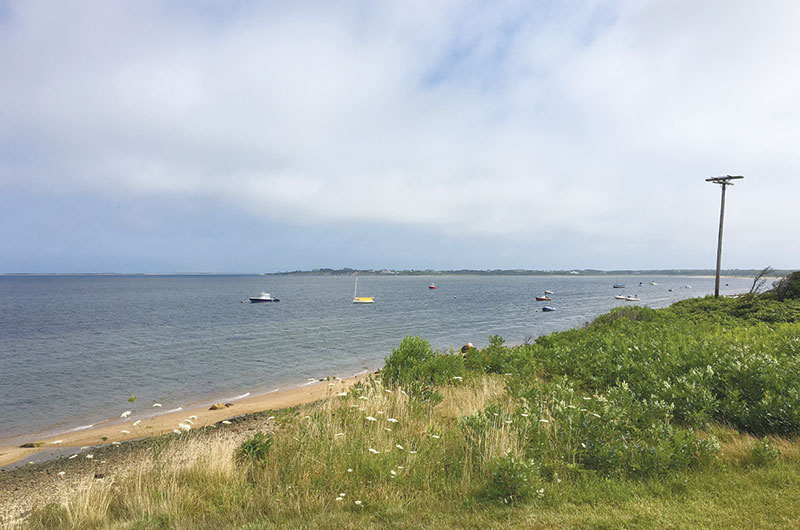by Corinne Muffly, Educator
A series of articles dedicated to helping parents find places and activities on Nantucket to enjoy with their children.

On the property, there is also a laboratory, staff residency, dormitory, and an office that looks more like a beach shack.
Located near the Nantucket Shipwreck a nd Lifesaving Mus eum, the UMass Field Station is down a simple winding dirt road leading to two potential parking lots. I usually drive down to the lot in front of the lab. The view looking over the salt marsh onto the harbor could take your breath away. There are always pure white cranes foraging for snacks in the marsh’s waters. That reminds me: in the winter, this is an excellent spot to spy snowy owls. Upon parking, continue to stroll down the dirt road past the staff housing, but take your time because there is a beautiful freshwater pond on the right. Once you’ve passed the pond there is a fork in the road. This is when you decide if you would like to venture on to the walking trails to the right or stroll along the harbor shore to the left.
If you are in the mood for a nature walk, then take the trails. Up a small hill you look out onto a field with well-manicured paths twisting several different ways. One path leads to the gorgeous bluff with a captivating harbor view. Another path takes you down toward the pond; home to Mallard ducks, Canada geese, and of course, plankton. At the edge of the path you will notice a large pole extending from the ground into the sky. This is not a telephone pole, but it is an osprey-nesting platform. As you ascend downhill along the shaded path, you are able to admire the various native and rare wildlife species that surround you. The path is narrow, but is wide enough for a jogging stroller. The trail does not feel consistent throughout your walk. There are open areas and tree-covered brook crossing points that make it that much more intriguing to meander through. The path concludes along the dirt road leading you back toward your vehicle. Check for ticks and watch for poison ivy!
Now, if you are in a beach mood, turn left at the fork mentioned earlier and the salt marsh will lead you toward the harbor. There is a curved narrow strip of sand that you will most likely have all to yourself. Since this is the harbor, the water is typically shallow and calm, which my dog thoroughly enjoys. As the bluff erodes, you may be lucky enough to discover an arrowhead in the sand.
The University of Massachusetts Boston Nantucket Field Station is a wonderful place to take your family and admire the nature Nantucket has to offer. This site is open to the public during the day and is free to explore. Respect the conservation land and enjoy your visit to this treasured location.


